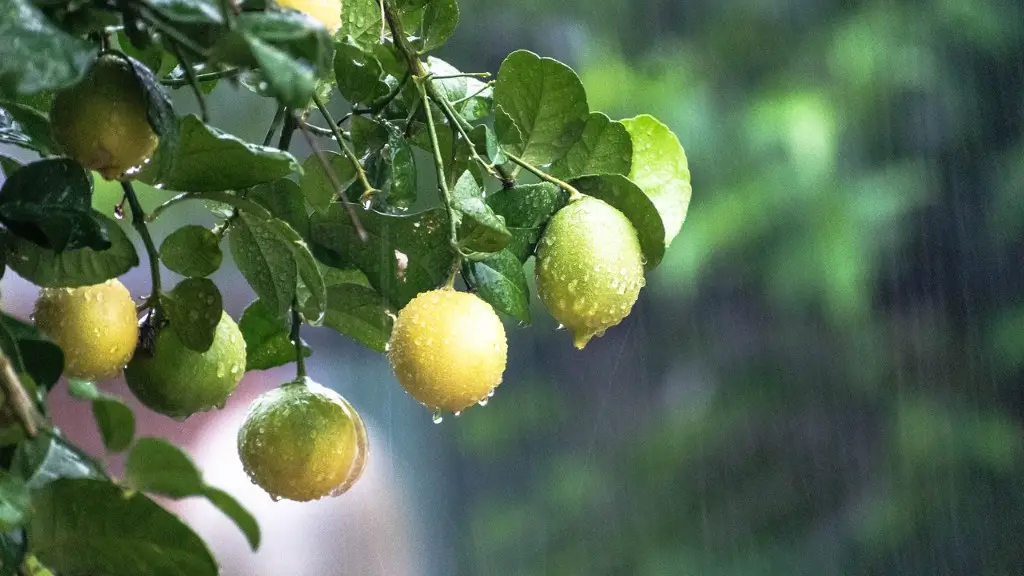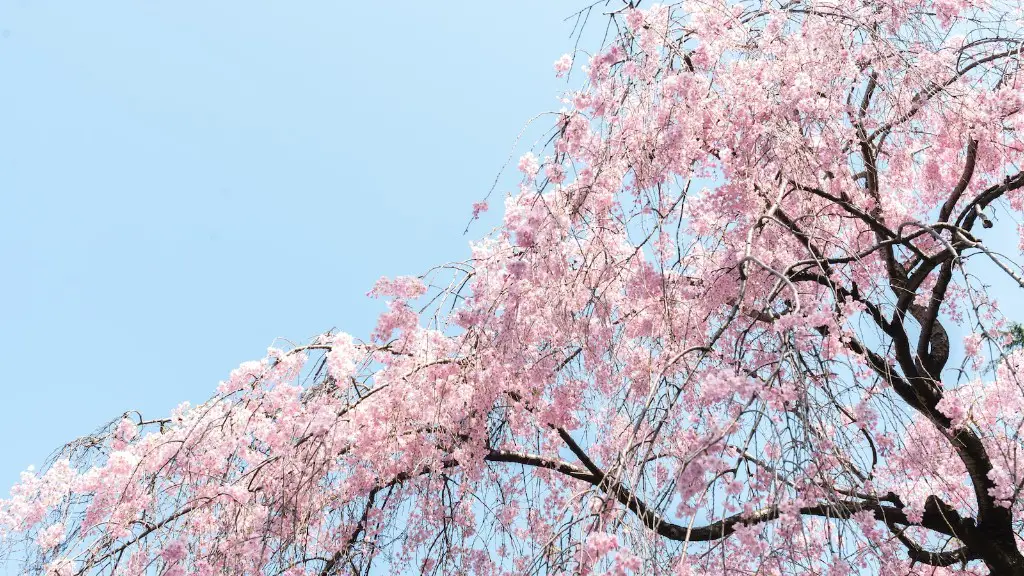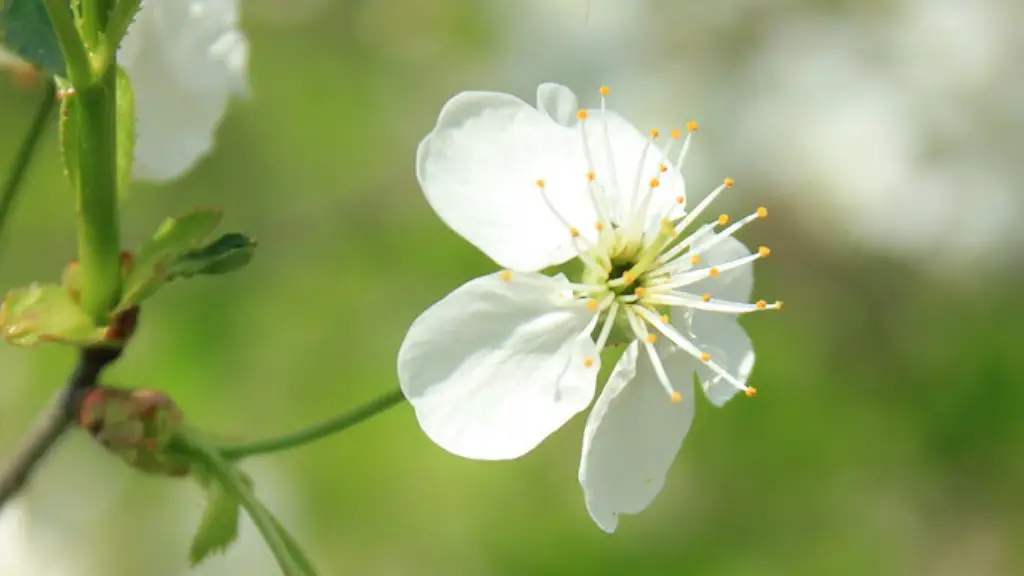Removing fungus from an apple tree can be a difficult and tedious process, but it is necessary for the health and longevity of your tree. If a fungus is left untreated, it can cause the tree to become weak and die. Here are some tips on how to remove fungus from an apple tree:
First and foremost, it is important to inspect the tree regularly. Inspect the leaves, stems and branches for signs of fungus growth, such as discoloration, wilting or smaller-than-normal leaves. Fungus thrives in moist and warm environments, so pay special attention to these areas.
Fungal diseases can be treated using an appropriate fungicide available in a spray, dust or granular form. Most fungicides contain copper, sulfur or mancozeb. Each fungicide has its own application instructions, so be sure to read the label carefully and apply according to the instructions.
If you don’t want to use a fungicide, there are some alternatives you could try. Spraying the tree with a mixture of baking soda, soap, and water can help, as can spraying it with a mixture of hydrogen peroxide, water, and alcohol. Apply either of these mixtures to the areas of the tree affected by the fungus and make sure to do so regularly.
If the fungus is on the bark or roots of the tree, you could use a thin paintbrush to apply the mixture directly to these areas. Be sure to wear gloves and long-sleeved clothing when working with the solution to protect yourself from the spray.
Finally, if the affected areas of the tree are particularly bad, it might be best to just remove the affected branches or roots of the tree. This should always be done as a last resort and only after consulting a professional to ensure that the tree is not in danger of further damage.
Preventing Fungus Growth
It is important to take steps to prevent fungus growth on your apple tree. Make sure to check the tree regularly and prune away any dead or dying branches. It is also important to provide adequate air circulation, preferably through thinning the tree canopy. Mulch or bark should also be kept away from the tree’s base to reduce moisture.
Fungus tends to thrive in wet and shady environments, so it is best to keep your apple tree in an area that receives plenty of direct sunlight. Increase water flow away from the tree’s base by planting it on a slope and make sure to fertilize it with a mineral-based fertilizer to reduce stress.
In addition to the above, it is important to ensure that the soil is well-drained and free of standing water. You may want to add some compost or aged manure to the soil to help improve the drainage. Finally, it is important to avoid overwatering the tree and to make sure that the foliage is completely dry before any fungicide applications.
Effects of Fungal Diseases
Fungal diseases can have a variety of negative effects on an apple tree. Fungus can cause the leaves to yellow and drop prematurely, it can stunt the growth of the tree, and in some cases, it can even kill the tree. It is important to act quickly and decisively when dealing with fungus.
In addition to the physical damage caused by fungus, it can also have a negative impact on the apple’s health. Infected apples often have a bad taste, and they are more susceptible to insect infestation and disease. Fungal diseases can also spread to other trees, so it is important to act quickly to prevent the spread.
Finally, fungus can have a significant economic impact. Many apple growers rely on the sale of their produce to make a living, and fungus can significantly reduce the number of marketable apples. In some cases, the level of infestation is so bad that it can mean the end of a crop.
Diagnosing Fungal Diseases
Diagnosing a fungal disease can often be a challenge, as there are many different types of fungi that can infect a tree. It is important to closely inspect the tree for any obvious signs of fungus, such as discoloration, wilting, and small leaves. Once the fungus has been identified, it is important to confirm the diagnosis with a soil or leaf test.
A soil test will provide information about the type of fungus present, its severity, and the amount of soil moisture. A leaf test can be used to determine the amount of active fungus and the amount of damage it has caused. The results of these tests can then be used to formulate a treatment plan.
If the fungus is widespread, a professional arborist should be consulted to assess the extent of the damage and to recommend a course of action. In severe cases, the infected branches or roots may need to be removed to prevent further spread, and treatment may need to be applied to the rest of the tree.
Treatment Options for Fungal Diseases
Once a fungal disease has been identified, the affected area can be treated with either a fungicide or a natural solution. Fungicides contain active ingredients such as copper, sulfur, or mancozeb, and many are available in spray, dust, or granular forms. Read the label carefully and follow all directions when applying a fungicide.
It is also possible to treat fungal diseases with natural methods. Spraying the tree with a mixture of baking soda, soap, and water can be effective, as can spraying it with a solution of hydrogen peroxide, water, and alcohol. In cases where the fungus is present on the bark or roots, a thin paintbrush can be used to apply the mixture directly.
Finally, it is important to take steps to ensure the fungus does not return. Prune away dead or dying branches, provide adequate air circulation, and ensure the tree’s base is free of mulch or bark. In addition, make sure to plant the tree in an area that receives plenty of direct sunlight and fertilize it with a mineral-based fertilizer.
Resistant Varieties of Apple Trees
Some varieties of apple tree have a natural resistance to fungal diseases. Look for apples that are labeled as ‘resistant varieties’, and make sure to source your apple tree from a certified nursery. If you are buying a grafted tree, make sure to check the graft union for any signs of infection before buying.
Once you have selected a resistant variety of apple tree, it is important to provide it with the right growing conditions to ensure it remains healthy. Make sure it is planted in an area with well-draining soil, provide adequate air circulation and water, and ensure there is no standing water around the tree’s base.
Finally, fertilize the tree regularly with a mineral-based fertilizer and prune away dead or dying branches. With proper care and maintenance, your apple tree should remain healthy and free of fungal diseases.




